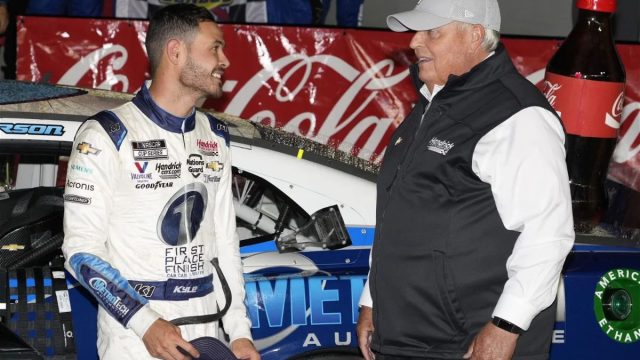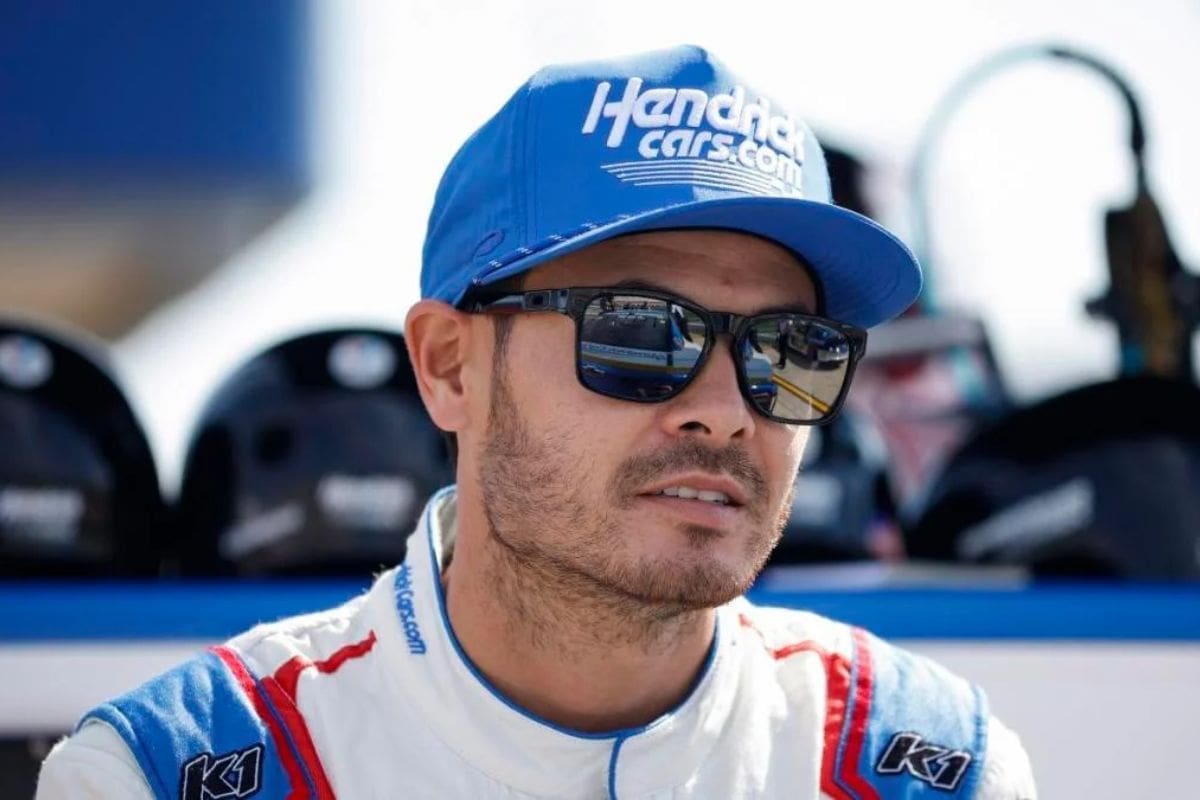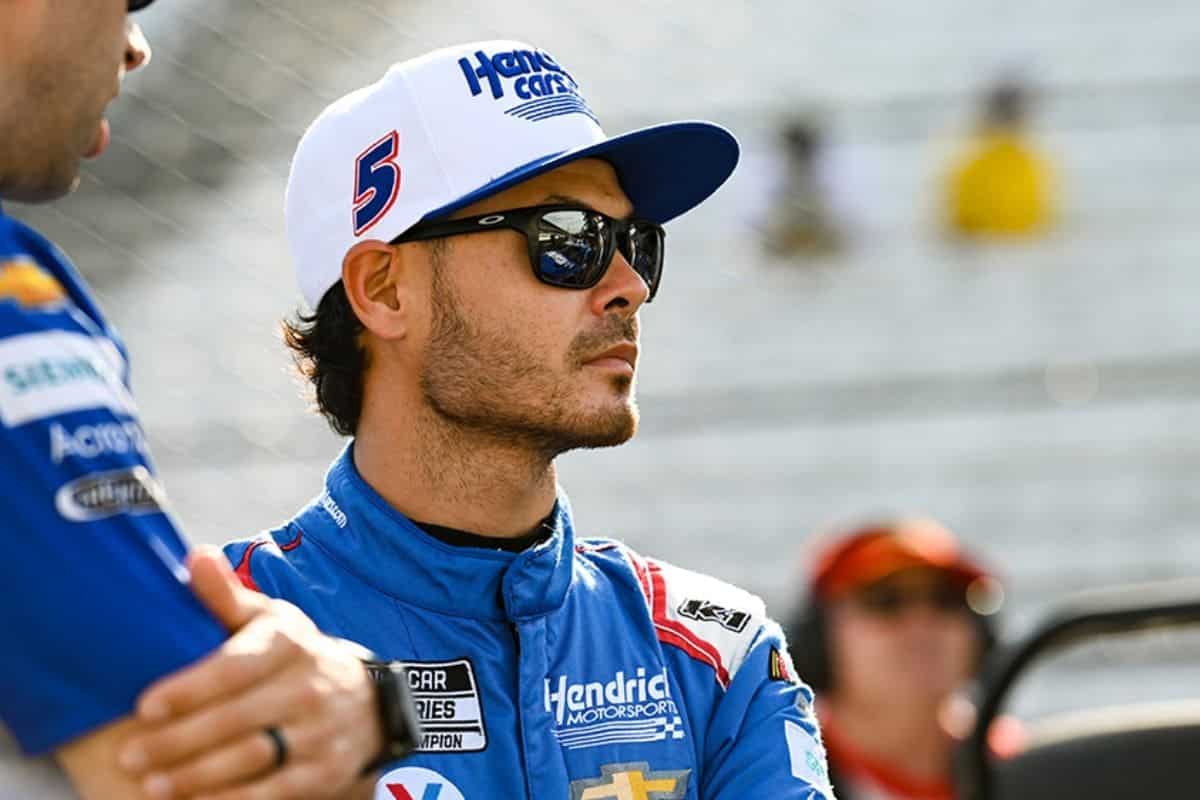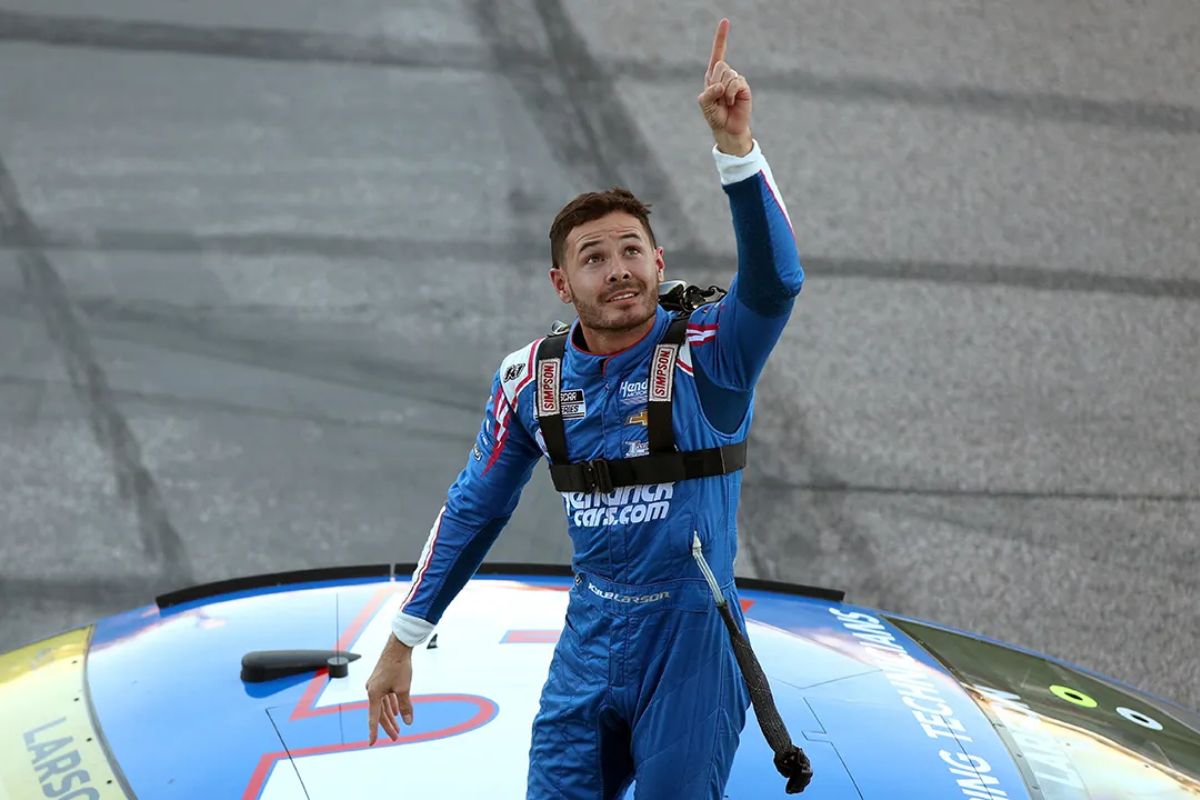Kyle Larson Shocks NASCAR With Rejection: Kyle Larson‘s recent decision to reject Hendrick Motorsports‘ global expansion plan marks a significant moment in his career and raises important questions about the future direction of NASCAR and its drivers. This rejection highlights Larson’s desire to maintain a distinct career trajectory and challenges the broader strategic visions within top racing teams. As Larson opts to prioritize his personal racing goals over a collective endeavor, it invites speculation about the implications for team dynamics and Larson’s future engagements in international motorsports events.
Key Takeaways
- Kyle Larson declined to join Hendrick Motorsports’ Garage 56 Le Mans project, opting for a different path in global racing.
- Larson’s rejection highlights his desire to compete in Le Mans in a competitive class rather than a demonstration category.
- By choosing not to participate in HMS’ global plan, Larson seeks to carve out a distinct, autonomous international racing legacy.
- Larson’s decision underlines his preference for traditional, competitive settings over promotional or experimental racing endeavors.
- This move could set a precedent for other drivers seeking autonomy in their career choices and participation in prestigious events.
Kyle Larson’s Ambitions Beyond NASCAR
Kyle Larson’s aspirations extend far beyond the familiar oval tracks of NASCAR, as he sets his sights on conquering the prestigious and challenging ‘The Double’ in motorsports. This formidable endeavor involves competing in two of the most grueling races in the same day: the Indianapolis 500 and the Coca-Cola 600 at Charlotte Motor Speedway. Larson’s ambition to tackle both events highlights not only his versatility and stamina as a driver but also emphasizes his profound dedication to carving out a legacy that transcends typical racing boundaries.
Achieving ‘The Double’ is a rare feat in motorsports, one that demands exceptional skill, physical endurance, and strategic insight. The logistical challenges alone are formidable, requiring precise coordination to shift between two distinct racing disciplines and locations within a tight timeframe. Larson’s approach to this challenge reflects a deep understanding of the physical and mental demands involved. His training regimen likely includes extensive physical conditioning to withstand the cumulative 1100 miles of high-speed racing, as well as simulations to adapt his driving technique from the high-banked ovals of NASCAR to the flat, fast layout of the Indianapolis Motor Speedway.
Larson’s Interest in Le Mans and Garage 56 Project
While Larson’s quest for ‘The Double’ exemplifies his versatility across American motorsports, his interest in the iconic 24 Hours of Le Mans further highlights his drive to leave an indelible mark on the global racing stage. Larson’s aspirations to compete in this storied event speak volumes about his commitment to expanding his racing credentials beyond the familiar circuits of NASCAR. The 24 Hours of Le Mans, with its grueling test of endurance, skill, and speed, represents a pinnacle in worldwide motorsport that attracts the finest talents from across the globe.
Despite Hendrick Motorsports’ (HMS) involvement with the groundbreaking Garage 56 project at the 2023 Le Mans, Larson has chosen a path less predictable. Opting not to join his team’s banner at this event is a telling decision. This move could be interpreted as a desire to forge a distinct legacy in the domains of international racing, independent of the existing frameworks set by his NASCAR affiliations.
Larson’s approach to Le Mans is indicative of a broader trend among elite drivers who seek to test their mettle in varied formats, thus enriching their experience and expanding their influence in the motorsport world. By potentially participating in Le Mans outside the HMS umbrella, Larson not only diversifies his career trajectory but also sets a precedent for autonomy in career choices amongst peers in the tightly knit racing community.
“Yeah, I mean someday for sure. I would like to do that as I’m a full-time NASCAR racer that’s pretty impossible to do but you know if whenever my career’s done, yeah I’d give it a go.” – Larson
Larson’s Preference for Competitive Racing
Larson’s emphasis on participating in a true competitive class at Le Mans highlights his deep-seated desire for authentic racing challenges against evenly matched rivals. Larson’s response to the proposal of racing under Hendrick Motorsports’ (HMS) Garage 56 project reveals his preference for an environment where the playing field is level and the competition is direct and tangible. His inclination towards racing in a ‘true race car’ emphasizes an ethos rooted in the fundamental principles of motorsport—where success is measured not just by participation but by direct comparison and rivalry within the same class.
“Well, I would like to do that in a true race car. You know, racing against other competitors and stuff. I think the Garage 56 stuff was really awesome, but they’re not really competing against you know other people in the same category of cars. I would like to do that.” – larson
This philosophy resonates with the core of competitive motorsports, where the thrill and integrity of the race lie in the equitable confrontation of technology, skill, and strategy. Larson’s stance might appear surprising in an era where technological innovations like Garage 56 are celebrated for their creativity. However, his viewpoint advocates for the preservation of traditional racing tenets—direct competition that tests both driver and machine in the same conditions and constraints.
Challenges Faced in Indy 500 Preparation
Preparation for the Indy 500 presents challenges for Kyle Larson, particularly as unfavorable weather conditions disrupt his training schedule ahead of the prestigious race. The endeavor to compete in both the Indianapolis 500 and the NASCAR Coca-Cola 600 on the same day, known as ‘The Double,’ requires not only immense physical stamina but also meticulous planning and adaptation to multifaceted racing environments. Larson’s attempt to emulate Tony Stewart, the only driver to complete all 1,100 miles of ‘The Double’ in 2001, highlights the audacity of his ambition.
Larson’s expertise in NASCAR is undisputed, yet the Indy 500 demands distinct competencies, particularly in handling open-wheel cars that differ significantly in aerodynamics and speed from stock cars. Shifting between these requires Larson to adapt to higher G-forces and a different style of competition. Furthermore, the Indy 500, with its unique traditions and challenges, entails a steep learning curve regarding race strategies and energy conservation over the grueling 500 miles.
In addition to the physical and technical challenges, logistical hurdles also loom large. Coordinating practice sessions and qualifying runs between the two vastly different racing formats involves a tight, often unforgiving schedule. This is further complicated by the need for rapid recovery and travel arrangements that guarantee Larson’s presence and competitiveness at both events.
Frustration with Weather and Practice Runs
Frustration mounted for Kyle Larson as inclement weather and unforeseen mechanical decisions severely limited his practice runs ahead of the Indianapolis 500. The driver, accustomed to the demanding nature of NASCAR, found himself grappling with the unpredictable nature of open-wheel racing’s preparations. With a mere three-day window to adapt to the dynamics of his new vehicle in traffic, Larson’s schedule was thrown into disarray when persistent rain led to a complete cancellation of track activities on Tuesday, allowing him only two laps.
The weather woes continued into Wednesday, further cutting short his valuable practice time. Larson managed to complete 47 laps, but this was still far short of the detailed track experience he had anticipated. His frustration was palpable, as he had hoped for extensive practice to familiarize himself with the intricacies of the IndyCar, which demands a different set of skills and strategies compared to his familiar stock car environment.
Thursday’s clear skies should have provided a perfect opportunity for Larson to make up for lost time. However, his team’s decision to perform an early engine change unexpectedly curtailed his practice, limiting him to just 11 laps. This series of setbacks not only hindered his physical preparation but likely impacted his mental readiness—a vital component of race-day performance.
News in Brief: Kyle Larson Shocks NASCAR With Rejection
Kyle Larson’s decision to decline participation in Hendrick Motorsports’ global initiative represents a significant deviation from conventional career trajectories in NASCAR. This choice highlights Larson’s strong inclination towards independence and his pursuit of diverse racing experiences, such as those offered by Le Mans and the Indy 500.
By prioritizing personal racing goals over team strategies, Larson not only challenges traditional norms but also reaffirms his commitment to shaping a distinct and influential legacy in motorsports.
Our Reader’s Queries
Q. Is Kyle Larson still with Hendrick Motorsports?
A. Kyle Miyata Larson, born on July 31, 1992, is an accomplished American auto racing driver. He currently races full-time in the NASCAR Cup Series, piloting the No. 5 Chevrolet Camaro ZL1 for Hendrick Motorsports. Additionally, Larson competes part-time in the NASCAR Xfinity Series, steering the No. 17 Chevrolet Camaro for the same team.
Q. Who did Larson drive for before Hendricks?
A. Formerly, Kyle Larson drove the No. 42 for Chip Ganassi Racing until the team’s separation from the driver in April 2020. Larson boasts an impressive record of 25 Cup race victories and secured spots in the NASCAR Playoffs from 2016 to 2019, as well as from 2021 to 2023. Notably, Larson clinched his inaugural win for Hendrick Motorsports in March 2021 at Las Vegas Motor Speedway.
Q. How much did Kyle Larson make with NASCAR?
A. Larson commands an estimated annual income of around $10 million as a driver for Hendrick Motorsports in the NASCAR Cup Series. His affiliation with the team began with his inaugural contract signing in February 2021.



